This was a post I put together for FHF a few months ago. I thought you might enjoy it.
I was planning on waiting until I actually returned from this trip to post the results, however seeing that it's 23:00 on New Years Eve, I'm literally the only guest at a hotel in northern Siskiyou County 50 miles from the nearest bar, my wife is already asleep and I'm watching Top Gear top 40 Countdown, I figure, ehh... I've probably got the time to start it.
I decided that the last thing I want to be doing in 2011 and the first thing in 2012 is take advantage of the three long weekend to go herping, well salamandering to be a bit more specific. I packed up my 4Runner with my wife and dog and off we went to State of Jefferson.
There was a bit of a question mark whether I'd have any success with the cold weather and lack of precipitation, but what the hell, I didn't have anything to lose. And considering the alternative consisted of going to a party, getting drunk and feeling like **** for two days. I figure why not, right?
I'd consider day one a success. I stopped by two sites looking for target species number one. I wasn't quite sure how to find this species. However, at site number three, I hit pay-dirt.
I located 4 adults and two separate juveniles without to much difficulty. Without the stress of having to be anywhere, my wife read her book and my dog bedded down for a nap while I settled in for a photoshoot.
Here are the results:
Adult Shasta Salamander (Hydromantes shastae)
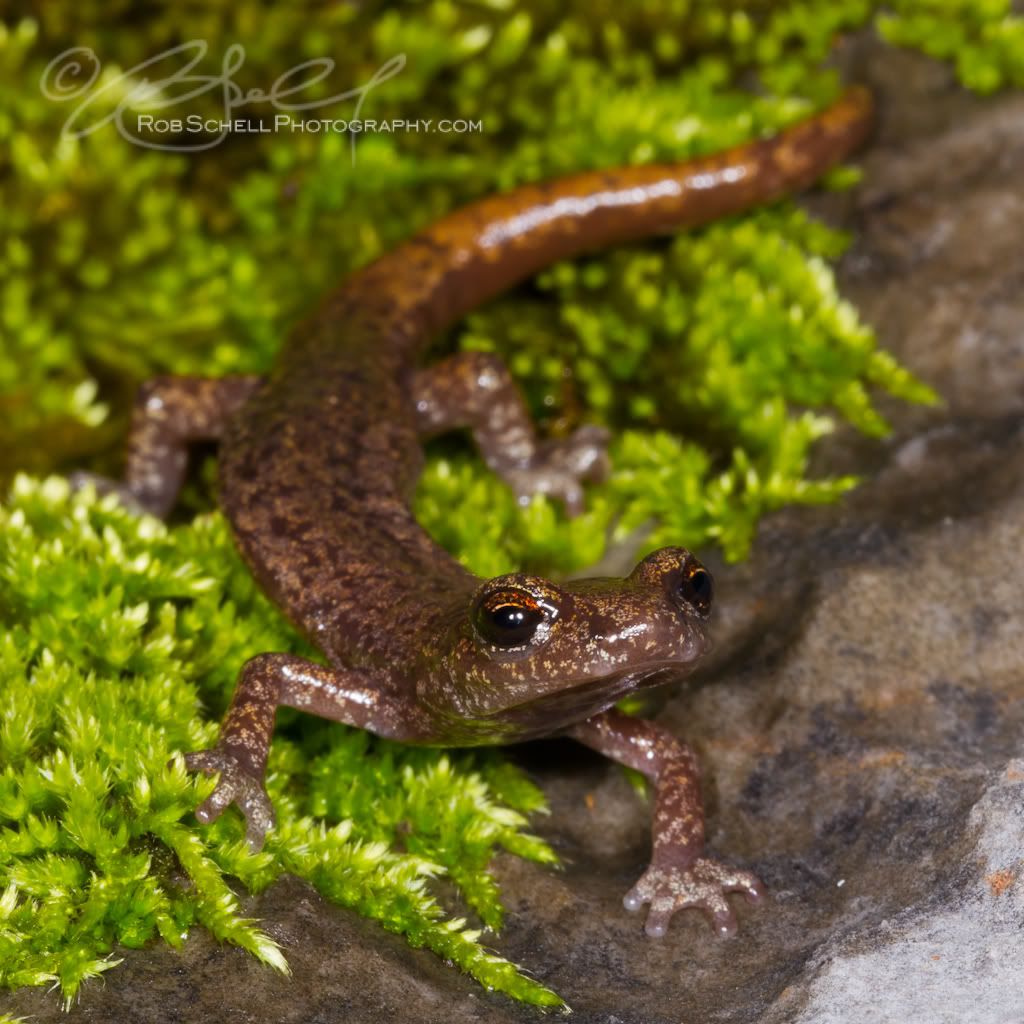
Another adult Hydromantes shastae
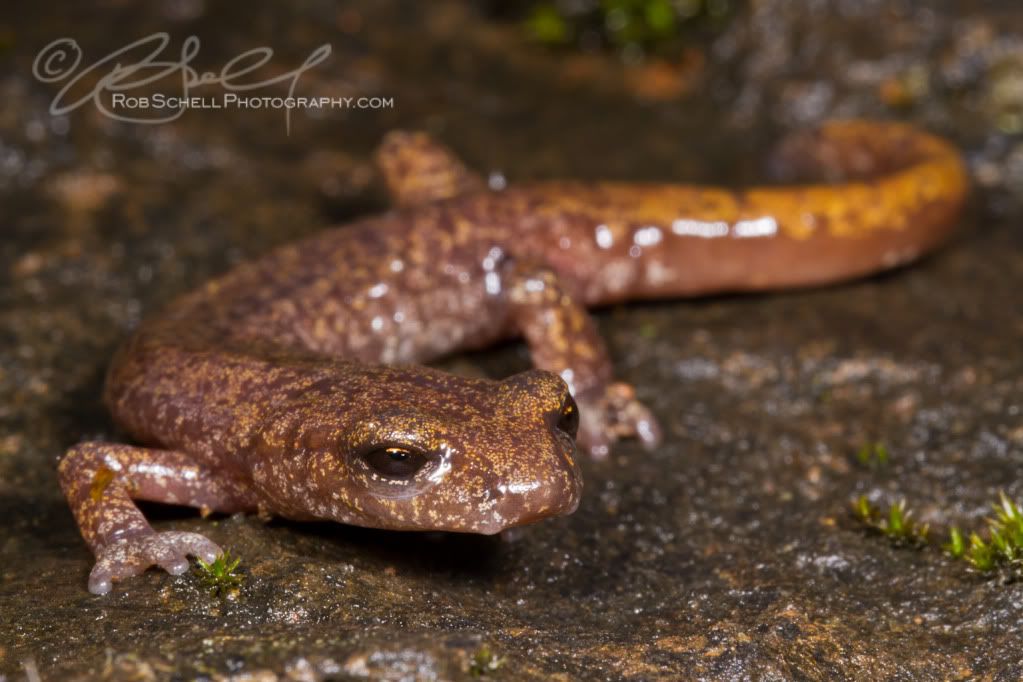
Adult Hydromantes shastae in-habitat
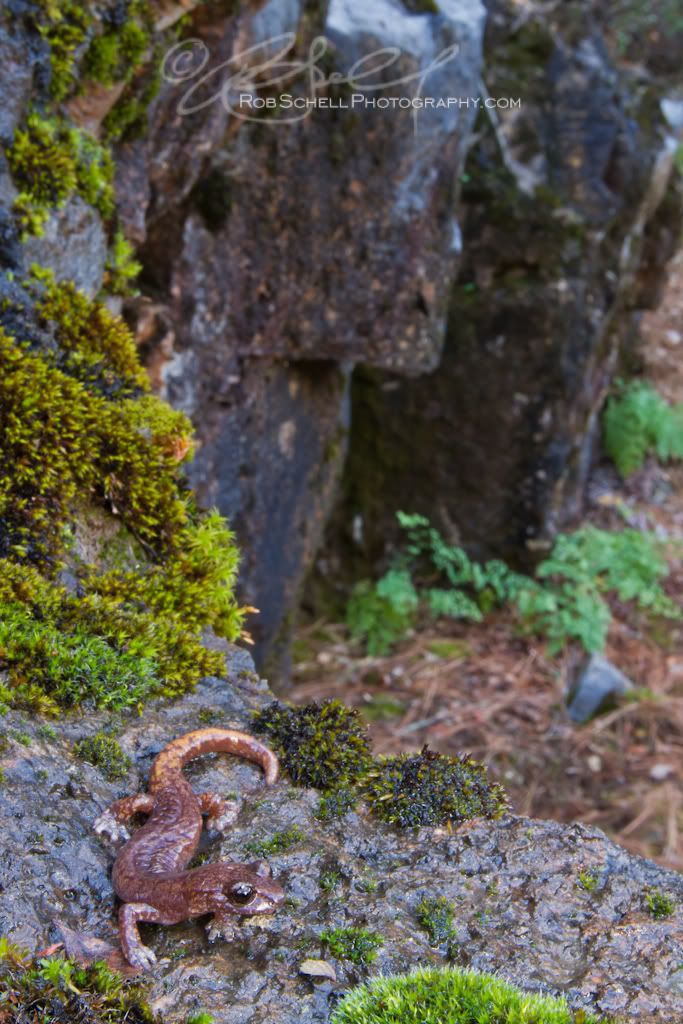
Juvenile Hydromantes shastae
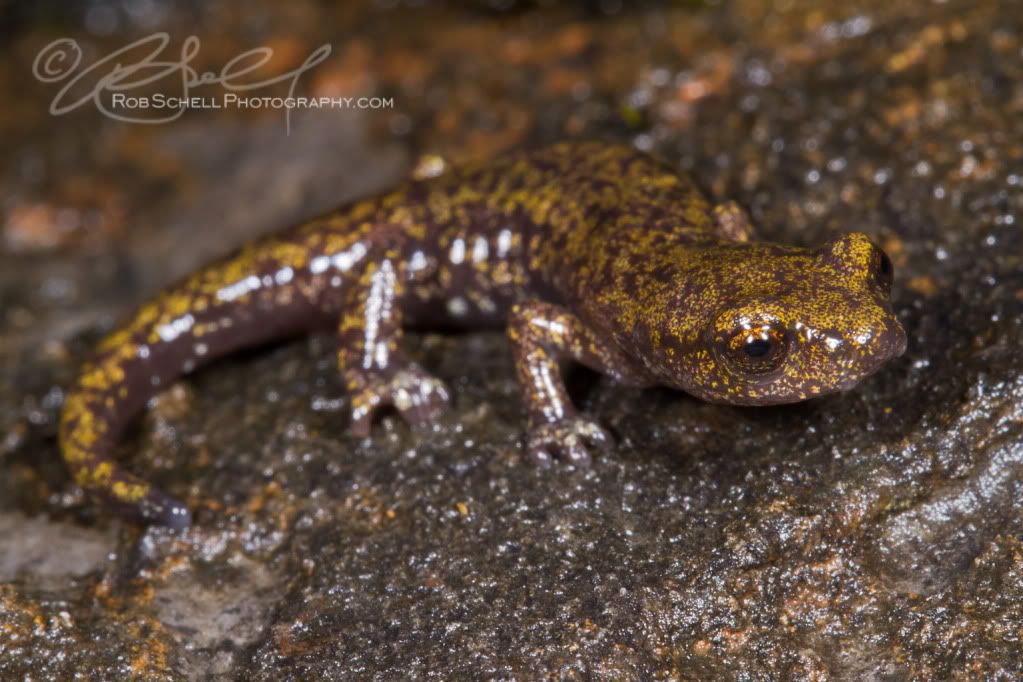
Another, slightly more colorful juvenile Hydromantes shastae
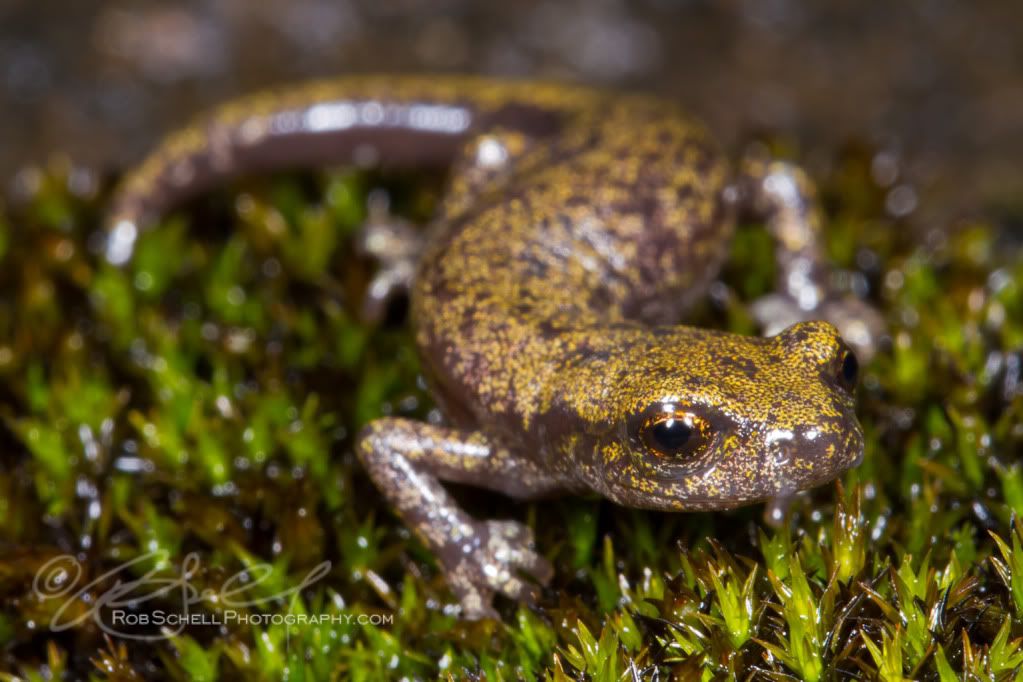
And lastly a palmetto-shaped Hydromantes shastae foot-shot

Hope everyone is having a Happy New Year - I will update this post over the next couple of days as the trip progresses.
Begin the second half of the trip
I honestly wish I could say that the trip ended as successfully as it began, but it did not. When I awoke sober on New Years Day, a first for me in probably a decade, 29 degree temperatures and the hard frozen ground greeted us. Undeterred, I still went after my intended targets for the day. After 4-5 hours of flipping rock, I was left with one Oregon Ensatina (that I didn't voucher) and a very sore back.
I did manage to flip this though: A California Forest Scorpion (Uroctonus mordax)

I'm assuming that the cold, dry weather was the culprit, and resigned myself to a return trip in April to get the other two.
With the cold weather, heading west to more temperate climates was in order.
I stopped by a couple of places on the way out west to try and pick up Rana aurora to which I was greeted with many no trespassing signs. I did, however manage to see a ringtail on the road - no pictures though. So after a long day of epic fail, we checked into the hotel in Arcata sulking from royal skunking I had received.
Not having any photos to process for the day, I took the opportunity at the hotel to do some research into a couple of drive-by spots that I might possibly hit on the way home. We left the hotel and had a proper breakfast and hit the road. A short while later, we made a detour for a hike through the redwoods. The trail was very well established without much to flip and what I did flip was bone dry underneath. Hope was dwindling.
I did manage to make the most of our hike, stopping to shoot some very groovy subjects:
Parrot Mushroom or Toadstool (Hygrocybe psittacina) aka: Witches Hat
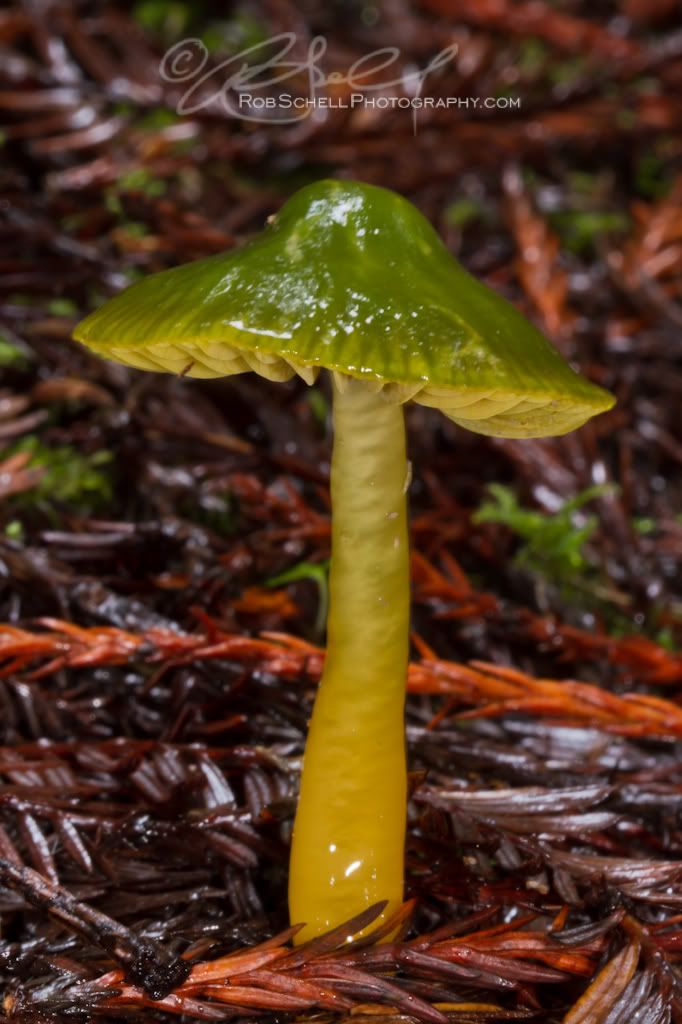
And a closer shot of the Hygrocybe psittacina cap and gills
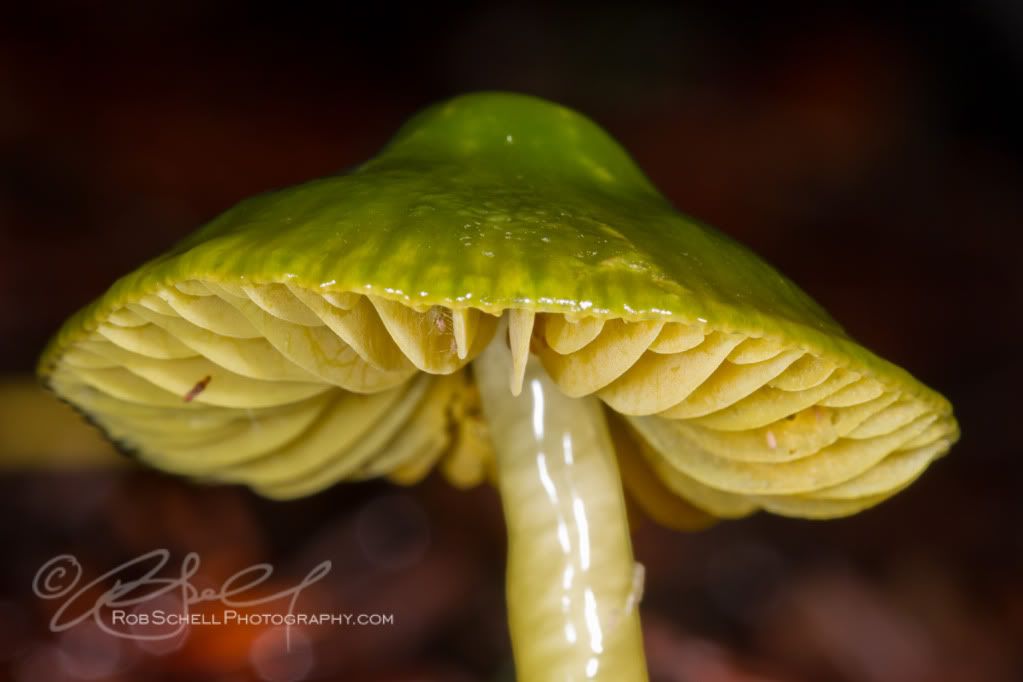
Also these were abundant: Scarlet or Crimson Waxy Cap (Hygrocybe punicea)
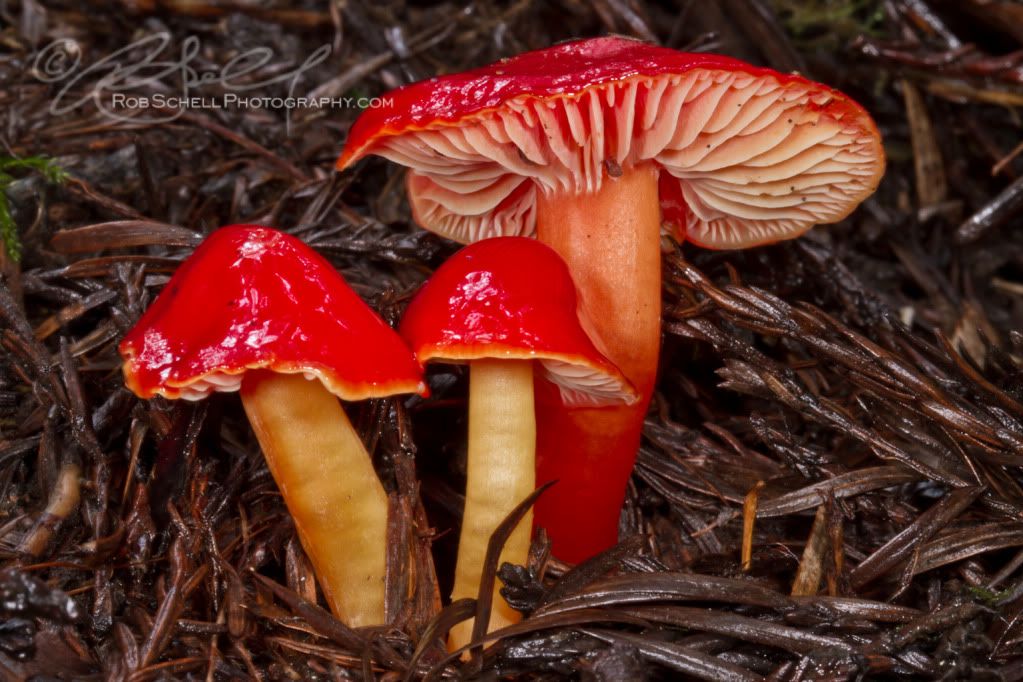
I know almost nothing about mushrooms or fungus, hell, I don't really even care for them as food, but I do find them to be really cool photographic subjects. Go-figure.
With the day wearing on and no herps had yet been found, we shot up a small dirt road with fingers crossed. I pulled the truck over to let a local pass and my wife pointed out a pair of marginal looking logs next to the road that were almost not worth getting out of the truck to flip. Don't you love how every once in a while, as soon as you think you know something, life has a way of smacking you upside the head?
Under log one was my consolation prize for the trip: I know they're not uncommon, but they're still a cool animal and all the photos I have previously taken were totally worthless. These guys are seriously tough to shoot!! I managed to come away with a couple shots that are usable:
Black Salamander (Aneides flavipunctatus)
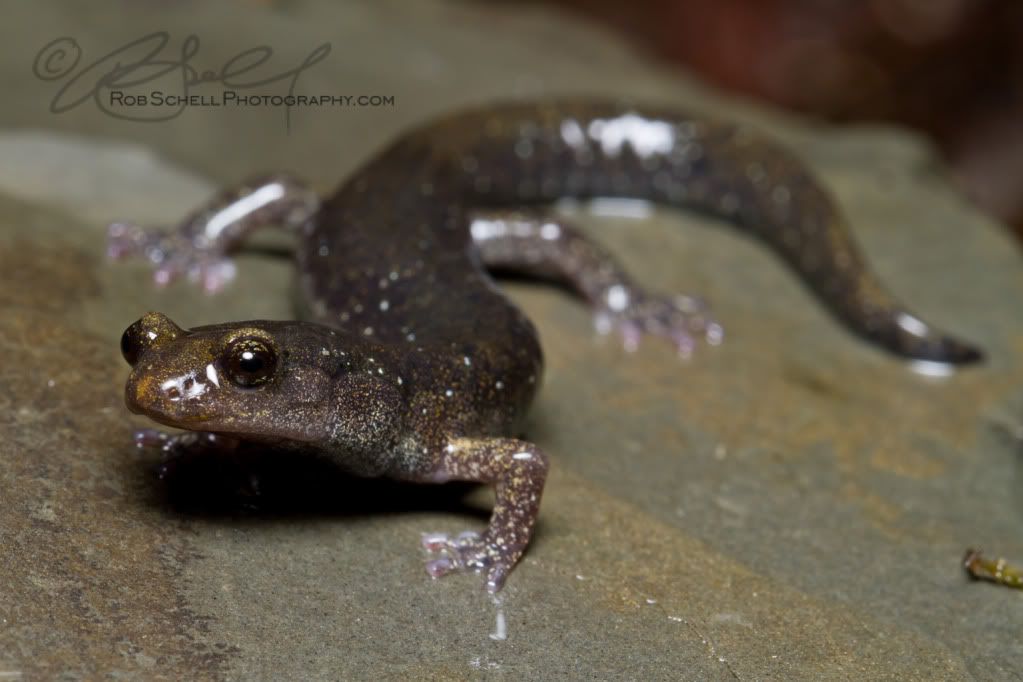
Black on black

Honest opinions, please... What do you guys think? Keepers or can 'em?
Recall I said a pair of logs? Sitting under log #2 was this:
Subadult Pacific [Coastal] Giant Salamander (Dicamptodon tenebrosus)
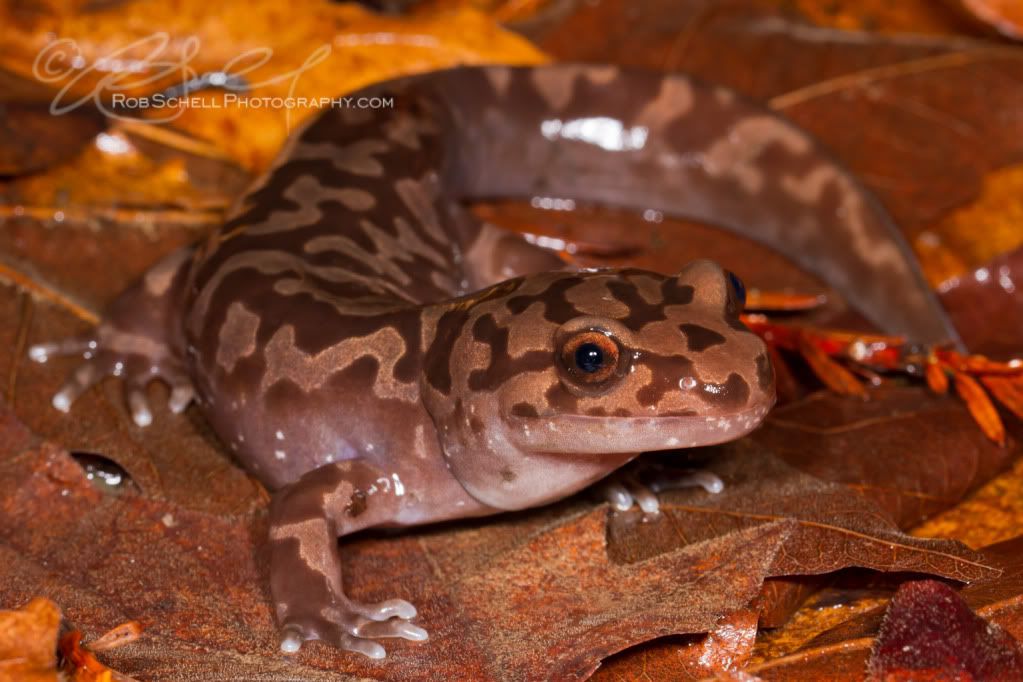
And while grubbing around trying to find a spot to shoot the previous two finds, I flipped a couple more denizens of the forest all within about 10 meters of one another.
Adult male Oregon Ensatina (Ensatina eschscholtzii oregonensis)
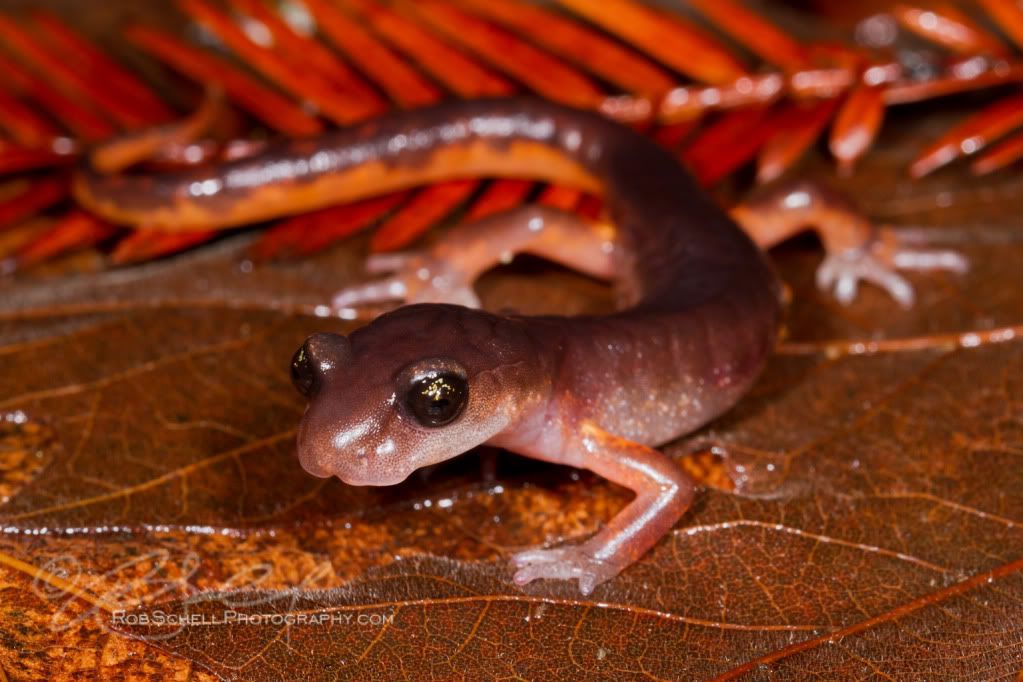
Juvenile Oregon Ensatina (Ensatina eschscholtzii oregonensis)
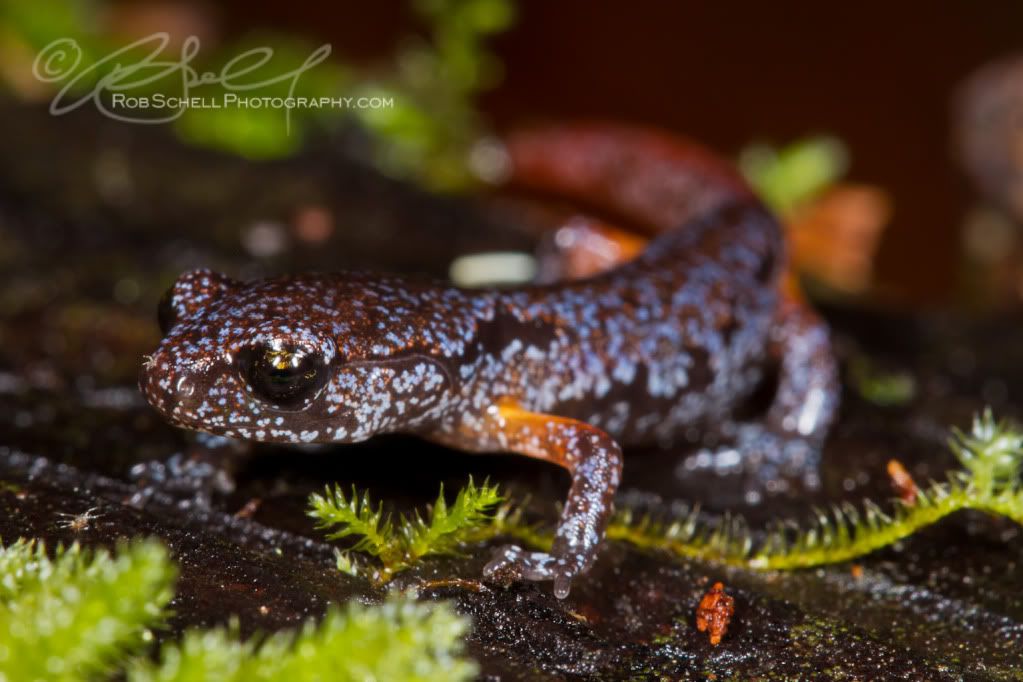
Although I only found one of my three targets, I found five species of salamander (Batrachoseps attenuatus is not represented here) and everyone had a pretty good time. Certainly the trip was more constructive than abusing my liver at a New Years Party.
Thanks for reading and if you haven't yet, please check out my facebook page at Rob Schell Photography | Facebook.
This account and others are archived on my website at Rob Schell Photography | Wildlife and Nature Photography. I also have many photos from other trips posted there.
Cheers,
Rob
I was planning on waiting until I actually returned from this trip to post the results, however seeing that it's 23:00 on New Years Eve, I'm literally the only guest at a hotel in northern Siskiyou County 50 miles from the nearest bar, my wife is already asleep and I'm watching Top Gear top 40 Countdown, I figure, ehh... I've probably got the time to start it.
I decided that the last thing I want to be doing in 2011 and the first thing in 2012 is take advantage of the three long weekend to go herping, well salamandering to be a bit more specific. I packed up my 4Runner with my wife and dog and off we went to State of Jefferson.
There was a bit of a question mark whether I'd have any success with the cold weather and lack of precipitation, but what the hell, I didn't have anything to lose. And considering the alternative consisted of going to a party, getting drunk and feeling like **** for two days. I figure why not, right?
I'd consider day one a success. I stopped by two sites looking for target species number one. I wasn't quite sure how to find this species. However, at site number three, I hit pay-dirt.
I located 4 adults and two separate juveniles without to much difficulty. Without the stress of having to be anywhere, my wife read her book and my dog bedded down for a nap while I settled in for a photoshoot.
Here are the results:
Adult Shasta Salamander (Hydromantes shastae)

Another adult Hydromantes shastae

Adult Hydromantes shastae in-habitat

Juvenile Hydromantes shastae

Another, slightly more colorful juvenile Hydromantes shastae

And lastly a palmetto-shaped Hydromantes shastae foot-shot

Hope everyone is having a Happy New Year - I will update this post over the next couple of days as the trip progresses.
Begin the second half of the trip
I honestly wish I could say that the trip ended as successfully as it began, but it did not. When I awoke sober on New Years Day, a first for me in probably a decade, 29 degree temperatures and the hard frozen ground greeted us. Undeterred, I still went after my intended targets for the day. After 4-5 hours of flipping rock, I was left with one Oregon Ensatina (that I didn't voucher) and a very sore back.
I did manage to flip this though: A California Forest Scorpion (Uroctonus mordax)

I'm assuming that the cold, dry weather was the culprit, and resigned myself to a return trip in April to get the other two.
With the cold weather, heading west to more temperate climates was in order.
I stopped by a couple of places on the way out west to try and pick up Rana aurora to which I was greeted with many no trespassing signs. I did, however manage to see a ringtail on the road - no pictures though. So after a long day of epic fail, we checked into the hotel in Arcata sulking from royal skunking I had received.
Not having any photos to process for the day, I took the opportunity at the hotel to do some research into a couple of drive-by spots that I might possibly hit on the way home. We left the hotel and had a proper breakfast and hit the road. A short while later, we made a detour for a hike through the redwoods. The trail was very well established without much to flip and what I did flip was bone dry underneath. Hope was dwindling.
I did manage to make the most of our hike, stopping to shoot some very groovy subjects:
Parrot Mushroom or Toadstool (Hygrocybe psittacina) aka: Witches Hat

And a closer shot of the Hygrocybe psittacina cap and gills

Also these were abundant: Scarlet or Crimson Waxy Cap (Hygrocybe punicea)

I know almost nothing about mushrooms or fungus, hell, I don't really even care for them as food, but I do find them to be really cool photographic subjects. Go-figure.
With the day wearing on and no herps had yet been found, we shot up a small dirt road with fingers crossed. I pulled the truck over to let a local pass and my wife pointed out a pair of marginal looking logs next to the road that were almost not worth getting out of the truck to flip. Don't you love how every once in a while, as soon as you think you know something, life has a way of smacking you upside the head?
Under log one was my consolation prize for the trip: I know they're not uncommon, but they're still a cool animal and all the photos I have previously taken were totally worthless. These guys are seriously tough to shoot!! I managed to come away with a couple shots that are usable:
Black Salamander (Aneides flavipunctatus)

Black on black

Honest opinions, please... What do you guys think? Keepers or can 'em?
Recall I said a pair of logs? Sitting under log #2 was this:
Subadult Pacific [Coastal] Giant Salamander (Dicamptodon tenebrosus)

And while grubbing around trying to find a spot to shoot the previous two finds, I flipped a couple more denizens of the forest all within about 10 meters of one another.
Adult male Oregon Ensatina (Ensatina eschscholtzii oregonensis)

Juvenile Oregon Ensatina (Ensatina eschscholtzii oregonensis)

Although I only found one of my three targets, I found five species of salamander (Batrachoseps attenuatus is not represented here) and everyone had a pretty good time. Certainly the trip was more constructive than abusing my liver at a New Years Party.
Thanks for reading and if you haven't yet, please check out my facebook page at Rob Schell Photography | Facebook.
This account and others are archived on my website at Rob Schell Photography | Wildlife and Nature Photography. I also have many photos from other trips posted there.
Cheers,
Rob
